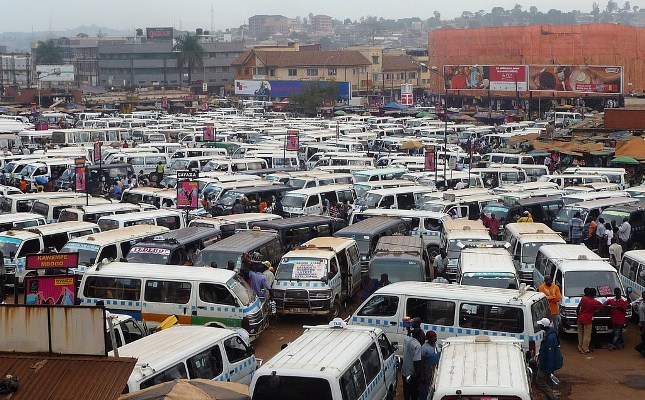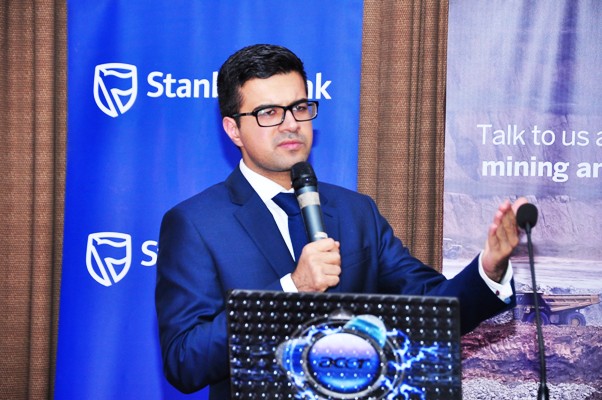Kenya and her neighbour Uganda are at loggerheads again, but this time over use of the inland container depot in Naivasha.
Whereas the former wants to make the facility viable after months of inactivity, the latter wants to protect its multi-billion-shilling investments at the port of Mombasa.
Uganda is not amused by a directive issued by the Ministry of Transport to have all cargo destined for landlocked countries cleared at Naivasha, saying, it is putting at stake their interests at the Coast.
This comes even as Uganda’s largest business conglomerate, Mukwano Industries, has warned of suing Kenya should it incur losses by being forced to use Naivasha.
REGULAR USERS
“We have been regular users of the Port of Mombasa for the last 35 years and have never experienced such an act. You and your staff are aware of the contractual carriage obligations that exist between the shipper, consignee and shipping lines,” reads a letter Mukwano Managing Director Alykhan Karmali signed.
“We are, therefore, requesting you to observe the above contractual obligations in place and failure to do so shall leave us with no option but to seek legal recourse and hold you liable for all losses, delays and damage that we may suffer as a result of your act,” he added last week.
In an interview with Smart Company chief executive officer of the Shippers Council Gilbert Langat said Ugandan businesspeople have invested a lot in Mombasa and their worry would be to lose that business “or be forced to relocate to Naivasha, where clearance of goods will be done.”
Mr Langat urged the government to be flexible and allow port users to make a choice between the two facilities.
ALLOW OPTIONS
“As much as it should encourage the use of railway, it should allow options. At the end of the day, shippers make a decision on the mode they would want to use based on cost and efficiency,” Mr Langat said.
Kenya is putting up a spirited fight to make the Naivasha ICD viable following reluctance from Uganda and truckers in using it as the government tries to salvage the project that has remained idle over the last six months.
With the Chinese loan used in the project maturing, the country is seeking to have the ICD fully operational in order to offset it.
In a four-page letter a week ago, Transport Cabinet Secretary James Macharia explained to his Ugandan counterpart the importance of embracing the ICD in Naivasha, breaking down some of the incentives that the Kenyan government has extended to them.
Uganda, however, argues that use of the ICD should be optional. Kampala is a major user of the port of Mombasa, accounting for up to a quarter of the cargo that passes through the facility.
Last month, Kenya informed Uganda, Rwanda and South Sudan that from June 2, they would be required to pick cargo destined to their countries at Naivasha after it was gazetted by Kenya Revenue Authority (KRA) as a customs area.
KEY FACILITIES
In the letter, Mr Macharia said the port has all the key facilities that will aid in service delivery and ease of clearance.
For instance, he pointed out, office accommodation has been provided for all the regional customs authorities from the three neighbouring countries.
The CS also noted that the ICD has a stacking yard with the capacity of 4,000 tonnes equivalent units (TEUs) and an equivalent of 120,000 TEUs a year.
“The ICD facility is connected to dedicated power supply and offices are fully installed with internet services among other utilities,” Mr Macharia said. He further noted that the ICD users will be given a 21-day free storage for their goods as they sort out logistics on moving them out.
The Naivasha ICD is at the heart of Kenya’s ambition to become the transport corridor of choice for neighbouring countries. It is not clear why Uganda wants the directive to be optional, given that the freight train to Naivasha ICD will reduce time taken to ferry consignments to the neighbouring countries cutting the distance from port of Mombasa by 46 per cent.
This is not the first time that the project is receiving a cold shoulder from users. A government directive to have all cargo destined to Nairobi ferried by train was met with resistance last year.
On December 17 last year, President Kenyatta launched the extended standard gauge railway (SGR) freight services from Mombasa to the Naivasha ICD, promising faster transportation of cargo to western Kenya and on to neighbouring countries.
CHANGE MIND
It is also not clear at what point or what made Uganda change its mind given that the issue had been discussed and agreed upon by four presidents from the East African Community last month during a virtual meeting.
“It’s our considered opinion that the use of Naivasha ICD, which is part of our long-term regional infrastructure development, should remain optional,” said Uganda Minister of Transport Katumba Wamala last month.
The government is adamant that the gazetted date of June 2, 2020 to implement the order still stands.
Mr Langat has urged the government to convene a meeting of Transport ministries from both countries and the private sector to have a conversation that will resolve the current standoff.
“I don’t think Uganda is opposed to this project, they only need a clearer communication on the matter,” Mr Langat said.
Separately, truck drivers have also resisted the Naivasha ICD, order citing massive investment and job losses. They want to meet Mr Macharia over the matter.
The Kenya Transporters Association chief executive Dennis Ombok said the number of trucks plying the Northern Corridor will drop by more than half if the directive is implemented, leading to huge job losses.
“Hundreds of workers in clearing and forwarding and truck drivers will be directly affected, but we should also note other businesses such as fuelling stations, and marshalling yards, among others, will lose out in the supply chain,” Mr Ombok told The East African.
ONE STOP-CENTRE
Kenya Revenue Authority (KRA) said last month that the Naivasha facility works on a one-stop centre model, where all government agencies — including those from Uganda, Rwanda, Burundi and Tanzania — will offer services.
Kenya moved the first consignment — a 200 20-foot equivalent units of cargo by Bolloré Transport & Logistics — direct from Mombasa to the standard gauge railway station at Suswa near Naivasha on May 7.
Kenya is yet to get funding of the final phase of SGR, which will link the country to the Malaba border and connect it to Uganda’s rail line.
The Chinese funding for the last phase of the SGR to Malaba had been pegged on the willingness by Uganda to build its part from the Kenyan border to Kampala.
However, Uganda seems to have hit a snag in terms of funding after China turned down their proposal, forcing the landlocked neighbour to start rehabilitating its metre gauge railway.
Cargo section forms the bulk of revenue for the Kenya Railway and with an incomplete phase, it makes it difficult for the government to recoup money to pay Sh150 billion loan spent on the phase 2A alone.
SGR is part of the northern corridor transport network, which connects the port of Mombasa to the neighbouring land-locked countries of Uganda, Rwanda, Burundi and South Sudan.
Kenya has been banking on the Kisumu Port to serve regional countries in the event the country fails to secure funds to extend the railway to Malaba.
Kisumu Port is estimated to cost about Sh14 billion, and the Treasury will need to secure about Sh350 billion for the Naivasha-Kisumu section.





